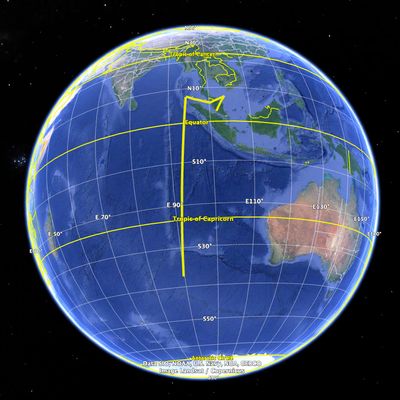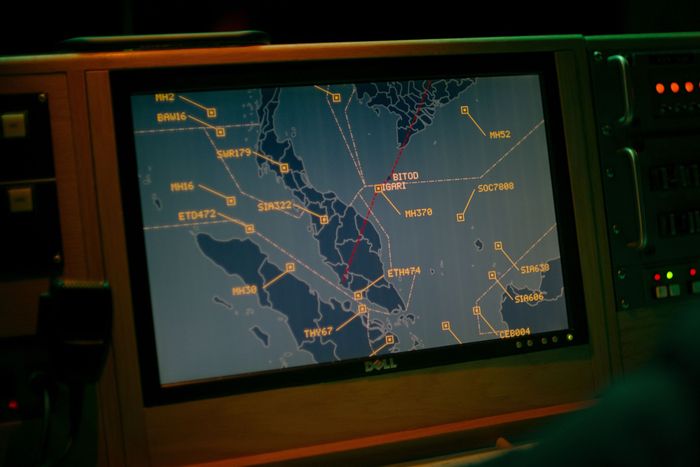
Nine years ago, MH370 took off into a clear, moonlit night and flew into the unknown. Somewhere over the South China Sea, 40 minutes into the red-eye flight from Kuala Lumpur to Beijing, it disappeared from radar screens. None of the 239 passengers and crew were ever seen again. The conventional thinking is that the pilot had decided to commit mass murder-suicide by crashing into a remote corner of the southern Indian Ocean. But significant aspects of the case remained unexplained, including the plane’s ultimate resting place, and search officials have long since given up trying to determine what happened. Officially, MH370 is a cold case.
The urgency of solving the mystery remains, though. It’s disturbing enough that a state-of-the-art airliner can disappear so completely off the face of the earth; it’s even more troubling that the authorities, armed with hundreds of millions of dollars to conduct a search and self-proclaimed near certainty about where it must have gone, could fail to locate the 200-foot-long aircraft.
I’ve been following the case obsessively from the beginning, appearing on CNN to talk about it and writing about it in this magazine. I dove deep into the evidence for a 2019 book, and then spent several years working with the producers of a three-part Netflix documentary series, which debuts this week. My hope is that, while the passage of time has lessened the public’s interest in the case, it has also dispelled the fog of wild claims, giving us space to consider the evidence with greater clarity. Far from being a dead end, MH370 still offers multiple leads worth investigating. It’s important that we follow them.
A strange U-turn
A distinctive aspect of the flight is that it got progressively weirder as it went along. Everything was normal when it took off from Kuala Lumpur. Then 40 minutes later, the plane went electronically dark and vanished from Air Traffic Control screens. Still visible on military radar, it pulled a hard U-turn and flew west toward India. Then three minutes after leaving radar coverage, its satellite communications system, or satcom, turned back on. For the next six hours, the satcom periodically emitted signals that would later offer investigators vague hints of the plane’s trajectory.
It took weeks before the Australian government announced to the public that its scientists had solved the mathematical riddle posed by those transmissions and had calculated the plane’s final resting place in the southern ocean. The implication was that the plane’s captain, Zaharie Ahmen Shah, must have taken the aircraft. Yet after spending years searching the area, and far beyond, they found no trace of the fuselage on the seabed, a turn of events they labeled in their final report as “almost inconceivable.”
So where is the plane?
To many people, the failure of the search seemed unsurprising. The ocean is a big place, after all. But the searchers’ failure was actually baffling. The data they were working from was precise and the mathematics were well understood. For the plane to have gone into the Southern Ocean, and yet wound up somewhere outside the search zone, would require a sequence of events ranging from vanishingly unlikely to flat-out impossible.
Wrestling with how this might have happened quickly gets you into weird territory. Most people, and the search authorities themselves, prefer simple, normal-seeming explanations. And if you consider only the broad outlines of the case, there are simple, normal theories that seem compelling. But once you start examining the evidence in higher detail, the simple theories start to develop holes.
The weirdest part of a weird mystery
To me, the great underappreciated red flag of the case is the fact that the satcom was turned back on. I have yet to meet a 777 pilot who, before MH370, had even heard of the critical piece of equipment, a box called the Satellite Data Unit, or SDU. It turns out that the procedure for turning the SDU off and back on is not included on any of the pilots’ emergency checklists, and instead requires a sophisticated knowledge of the plane’s electrical system. Of all the many theories floated about MH370, none includes a plausible explanation for why anyone would want to mess with it. Yet this inexplicable eventuality gave rise to the signals that the whole seabed search rested on.
What we can say now is that whatever happened to MH370, it must have been deeply strange. As the years have gone by, even more mind-bending clues have turned up, like the data from the captain’s home flight simulator (first described in this article) which ambiguously suggests he may have practiced a flight into the southern ocean. All the same, though, the range of possibilities is not infinite. Investigators possess numerical data generated by known physical processes. This data did not come out of thin air. Theories that match it might be correct; theories that don’t must not be.
As I struggled to make sense of the case’s anomalies in the early months after the disappearance, I realized that some unusual details of the plane’s electrical configuration might point the way to a solution. As I explained in a New York Magazine feature eight years ago, if hijackers tampered with the SDU to create a false electronic trail for investigators, then the implication would be that the plane didn’t go south after all, but rather north to Kazakhstan. The only possible perpetrator of such an operation would be Russia, which was in the process of seizing Crimea from Ukraine at the time and benefited from having the world’s attention redirected. I admitted then that my theory is something of a wild ride, but it has yet to be disproven. The default hypothesis is not the only option.
What we can still do
The good news is that there are positive steps that we the public can take to help move this case closer to a resolution. For starters, we can urge the Australian government to reopen the investigation and make a serious, transparent reckoning of where its assumptions went wrong. Second, we can pressure the Malaysian government to finally release all the evidence in its possession, including the full set of military radar returns showing the plane’s last known track.
It’s clear that the authorities have been embarrassed by their failures so far. The easiest thing for them to do would be to leave it all in the past. But too much is at stake — both for the family members of the disappeared and for the flying public, who have a right to know that their aircraft will not spontaneously vanish. As I hope the Netflix documentary makes clear, there’s an uncomfortable hole in our seamless network of global transportation. We need to do every conceivable thing in our power to figure out what happened.
MH370 is not a legend. It is real, and science can find it.






























